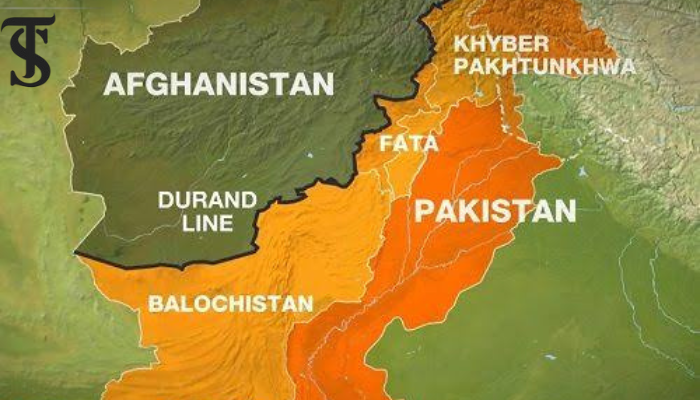US-China Rivalry and Its Impact on Nuclear Non-Proliferation in the Indo-Pacific

- Intensifying US-China Rivalry – The Indo-Pacific is a focal point of strategic competition, with tensions rising over military presence, alliances, and nuclear deterrence.
- Impact on Nuclear Non-Proliferation – China's nuclear modernization and US deterrence strategies challenge global non-proliferation efforts, raising security concerns.
- Regional Security & Diplomacy – Alliances like AUKUS and Quad reshape power dynamics, requiring strategic diplomacy and confidence-building measures to prevent escalation.
To begin with, the rivalry between major powers in the Indo-Pacific is growing more intense. Regional issues are becoming worse, nontraditional security threats are rising, and the security dilemma and risk of conflict have become more serious. Concerning the US-China rivalry, it would be well suited to quote here John Mearsheimer:
“The intensifying rivalry between the United States and China in the Indo-Pacific is reshaping regional security dynamics and complicating efforts to maintain nuclear non-proliferation agreements.“—John J. Mearsheimer, “The Great Delusion: Liberal Dreams and International Realities.”.
Indo-Pacific and the major power rivalry:
Looking deeper into the region, the Indo-Pacific is home to seven of the world’s ten largest standing militaries, five of the world’s declared nuclear nations, and five countries allied with the United States through mutual defence treaties. Several nuclear threshold powers also reside in the region—states with the capability to develop nuclear weapons without having done so.
The current global threat to American hegemony is China’s increasing dominance as one of the world’s emerging superpowers. The US is concerned about China’s growing influence across important strategic areas such as the South China Sea, the Indian Ocean, and the Pacific Ocean. Hence, the Indo-Pacific has become the focal point of rising competition between China and the US, where both states are seeking to secure their positions at international and regional levels. The US supports a “free and open Indo-Pacific” and intends to offset China’s influence. This objective has now been enhanced with the creation of AUKUS with strong support from the UK and Australia. It is considered a reaction to what is seen as encroachment by China.
The Indo-Pacific is strategically significant, and nuclear issues are becoming more complex as countries in the Indo-Pacific attempt to navigate the increasingly unrestricted return of global great power competition. Efforts to prevent nuclear proliferation in the region involve treaty compliance, such as ensuring adherence to the NPT and other relevant agreements; diplomatic engagement, concerning facilitating dialogue and negotiations to resolve nuclear disputes; and security guarantees, which involve providing assurances to non-nuclear states to deter them from pursuing nuclear capabilities. Another important aspect is export controls, which regulate the transfer of sensitive technologies that could aid in nuclear weapons development. The effectiveness of these measures is influenced by the broader geopolitical situation, including US-China relations.
There is a critical opinion of some scholars that China might be against any negotiations due to a significant disparity of its nuclear forces vis-à-vis the US and Russia. A predictable disincentive to negotiate for China is the reduction and limitation of comparative advantages in its nuclear forces too. With that in mind, China’s inclusion in such processes is of utmost importance. One of China’s emerging and modern nuclear forces, specifically the dual-capable land-based anti-ship ballistic missiles, named DF-26 and called an “aircraft carrier killer,” might be employed in flashpoints in the Indo-Pacific region, such as the South China Sea, Taiwan, and Senkaku Islands, and might cause potential risks of unintended escalators and accidental use of nuclear weapons in combat.
To encourage China’s participation, the US and Russia could propose a detailed ban on nuclear-armed intermediate-range ballistic and cruise missiles. This would limit the use, deployment, and development of ground-based missiles capable of carrying both conventional and nuclear warheads. Such an agreement would reduce the risk of mistaking a conventional missile launch for a nuclear one, helping to lower nuclear risks and the importance of nuclear weapons. This approach would need strong verification measures such as monitoring, counting missiles, and on-site inspections to ensure no nuclear warheads are present at the missile site.
Analytically, if we look at these dynamics, probably three key pillars can ensure nuclear security in the Indo-Pacific: firstly, the region must be viewed collectively rather than as individual states. Secondly, the region must be proactive in addressing its institutional deficiencies to reduce the risk of security and nuclear threats. Lastly, the Indo-Pacific must develop its regional confidence-building measures.
Implications of US-China Rivalry on Nuclear Non-Proliferation:
China’s rapidly improving nuclear capabilities and expanding nuclear arsenal support its recent rise as a nuclear competitor. For the United States and its allies in the Indo-Pacific region, the uncertainty of China’s intentions behind this nuclear expansion presents a major challenge. China is modernising its nuclear forces in response to the nuclear superiority of the United States.
In turn, the US is realigning its conventional maritime forces in the region in the face of China’s growing nuclear and conventional capabilities. This dynamic then has a cascading effect (consequential impact) on India, which is further modernising its nuclear arsenal, both on land and at sea, to counterbalance what it sees as China’s superior nuclear forces. In the meantime, the proliferation of sea-launched nuclear weapons in the Indo-Pacific has the potential to aggravate instability among the region’s nuclear powers.
The competitive nature of US-China relations can hinder collaborative diplomatic efforts essential for strengthening non-proliferation frameworks. Mutual distrust and conflicting interests may lead to reduced cooperation in international forums, which weakens the implementation of treaties like the NPT. The AUKUS agreement appears to violate the Non-Proliferation Treaty as well as the US decades-long commitments to reduce highly enriched uranium stockpiles in non-nuclear weapon states. So we can see that the United States has abandoned its commitment to non-proliferation in favour of a deal that is more strategic and is primarily driven by national interests.
Concerning regional security, US-China rivalry reshapes regional security, having a great influence on alliances and partnerships. The formation of strategic alliances (e.g. Quad) aims to counterbalance China’s influence, potentially leading to increased military cooperation and more enhanced nuclear security measures among allied states. Conversely, China’s efforts to develop its alliances and assert dominance may, in return, complicate the collective non-proliferation initiatives. Therefore, it’s undeniable to say that these dynamics can affect the efforts to prevent nuclear proliferation.
Taking into account the competitive nature of the two great powers and their implications on nuclear non-proliferation, a better understanding can be developed through the case study. North Korea’s nuclear program is a major issue through its unconstrained development of nuclear weapons and missiles, and the rivalry between the US and China significantly plays a big role in how the world deals with it. China is North Korea’s main economic and political supporter, which gives China a lot of influence over how sanctions are applied and how negotiations with North Korea go. Because the US and China have different approaches and goals, they don’t always work together smoothly on how to handle North Korea. This lack of coordination can weaken sanctions, giving North Korea the chance to continue developing its nuclear weapons program.
Conclusion:
In a nutshell, after having a look at all these dynamics, it wouldn’t be wrong to say that the US-China Rivalry has a significant impact on nuclear non-proliferation efforts in the Indo-Pacific region. Although it poses challenges like the potential for an arms race and diminished cooperation, we can see some opportunities through strategic diplomacy and multilateral engagement to reinforce nonproliferation.
Aamna Ali
The author is a student of International Relations at the University of Sargodha.





